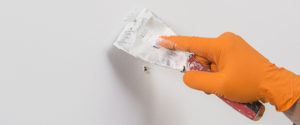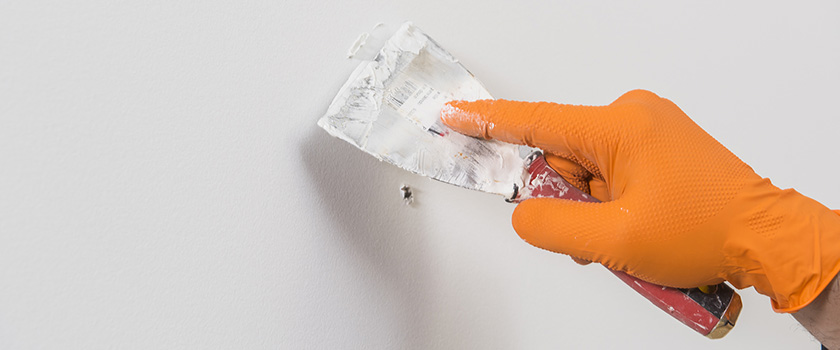Eliminate the bulges caused by nail pops before you paint for perfectly flawless walls.
 Nail pops are normally due to the movement of wood or drywall and generally appear within one year of construction.
Nail pops are normally due to the movement of wood or drywall and generally appear within one year of construction.
When a new home or addition is built, the lumber used may contain moister. Moister is absorbed in the open aired warehouse where it is stored until use. After construction, the wood slowly dries which may cause studs to shift or slightly twist. This drying of the wood could also cause a nail holding drywall to shift which loosens the joint compound that was covering the nail. The popped nail can appear as a bump, bulge or become completely visible as the compound may have fallen away all together. Not to worry. You might not need a drywall contractor as it’s only a cosmetic issue and most of the time can be repaired quit easily.
How to repair Popped Nails
You can easily take a hammer and tap the nail back down and cover it with joint compound but the chances of it happening again are a problem. To insure this doesn’t happen again, after tapping the nail back down place two drywall screws in the stud. One above and one below the popped nail. The drywall screws will insure proper attachment of the drywall panel to the stud.
Picking the right screw
Picking the right screw length to reinforce a popped nail must be considered. Too short a nail and it will not penetrate the stud. If this happens the nail will pop again later. The general rule of thumb is having a minimum of ¾ of an inch penetration. For example, ½ inch thick drywall, you would need at least 1 ¼ inch long screws.
Add more screws if you suspect skimping
If you come across multiple popped nails, your installer did not use enough screws. Screws should be every eight inches along the edges of drywall and every twelve to sixteen inches in the center of a panel. If you suspect this is the case, you may want to add additional drywall screws to reduce the risk of future pops.
Filling in indentations
Drywall screws are designed with a trumpet-shaped head. This allows the screw to lie just below the surface of the drywall. This leaves a small indentation which will need to be filled with joint compound. First smooth over all indentations with joint compound, making sure to remove any excess. Let the compound dry for 24 hours and then apply another thin coat with a putty knife. When this is dry, sand over the compound and roll on a new coat of paint.
Popped nails in combination with other problems
New houses go through a period of settling, if the house has other visible problems in conjunction with having popped nails, you may want to consider a contractor as structural problems should be addressed before repairing popped nails. These could come in the form of:
Visible cracks in the foundation
Cracks in the corner of ceilings
Cracks around windows and doors
Doors that stick or do not close properly
Structural issues should be addressed by a structural engineer or contractor. If you need a drywall contractor in the Durham Region area Envision Built Contracting is happy to provide a free consultation.

